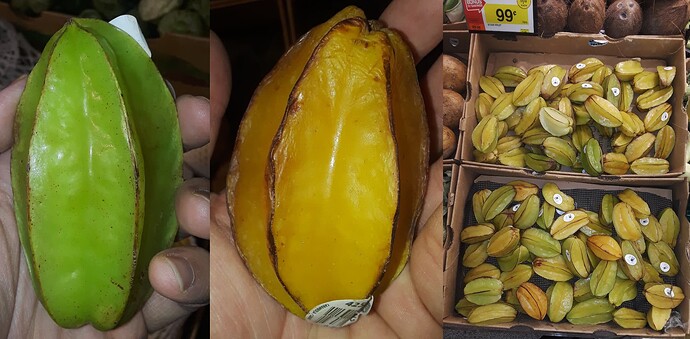If I understood this correctly, Starfruit (Averrhoa carambola) is poisonous because it contains 2 toxins, the Neurotoxin Caramboxin (which Damages Brain) & the Toxin Oxalic Acid (which Damages Kidney).
It’s been recomended to not eat starfruit in large quantities (Especially on an empty stomach) because of these toxins, but at the same time lots of people eat starfruit making this very concerning. Aparently in Brazil Starfruit is sold with a warning label about these toxins but in the U.S., no such label is found (At least from my experience).
Normally Caramboxin is filtered thru healthy Kidneys but this can be compromised by Oxalic acid & thus together they interact & worsen the problem. This is especially why starfruit should be avoided entirely if suffering from any kidney issues, but the same could be said about Woodsorrel (which belongs to the Same family as starfruit), Garden Sorrel, Rhubarb, Spinach, Beets, Amaranth (Which all contain Oxalic Acid also).
Any information about how the ripeness of starfruit affects the toxicity? I’ve read the more riper yellow with brown edges a starfruit is, the less oxalic acid it contains (A typical trend of many ripe fruits having reduced/no toxins left after ripening. For example : Tomato, Figs, Avocados, ect). Most grocery stores sell Starfruit greenish as it ships better that way.
Here’s an Unripe vs Ripe starfruit I found at my grocery strore. Last photo on right shows a mix of ripe & unripe fruit at grocery store (which is typical because starfruit ripen off the tree).
I’ve also heard cutting off the edges of star fruit significantly reduces the oxalic acid content.
So if we reduce the content of oxalic acid by trimming the edges & eating starfruit at peak ripeness, we can also better process the Neurotoxin Caramboxin to filter it out thru our urine? However does the amount of Caramboxin also get reduced when the fruit ripens, or does this only apply to the Oxalic acid?
In other countries, unripe fruits are eaten cooked or in pickles, is this a safe thing to do? Maybe the cooking or pickling process reduces/breaks down the oxalic acid making it not a problem (Just like with Spinach, Sorrel & Beets)? But what happens to the Caramboxin?
I found this study on Starfruit toxicity, however no info about how ripeness affect toxicity. Has anyone found a study on how ripeness of starfruit affects toxicity or what we can do to safely eat startfruit?
https://sci-hub.box/https://doi.org/10.1016/j.toxicon.2020.09.010
The flowers of Starfruit are also edible raw or cooked just like wood sorrel (Oxalis spp.), both part of the same family, both contain Oxalic acid, both edible in small quantities. They add an acidic flavor in salads. Do the Flowers also contain the Neurotoxin Caramboxin, or is that only found in the fruit?
The leaves of Starfruit are also edible raw or cooked & used as a sorrel substitute. What are the health risks here beside oxalic acid? Should we eat small quantities of Starfruit leaves raw & boil larger quantities or just avoid starfruit leaves entirely? Do the leaves also contain the Neurotoxin Caramboxin, or is that only found in the fruit?
What about the other species of Startfruit (Averrhoa spp.), are they also toxic? Such as Bilimbi (Averrhoa bilimbi)?
I found this study on Bilimbi fruits toxicity : https://casereports.bmj.com/content/bmjcr/14/7/e242325.full.pdf
Apparently the toxin Caramboxin is water soluable. Hmm… how can we out-smart this toxin? Lectins in beans are also water soluble hence why pre-soaking is so important prior to cooking them. Should we be pre-soaking our starfruits too? How does that work practically ![]() ?
?
